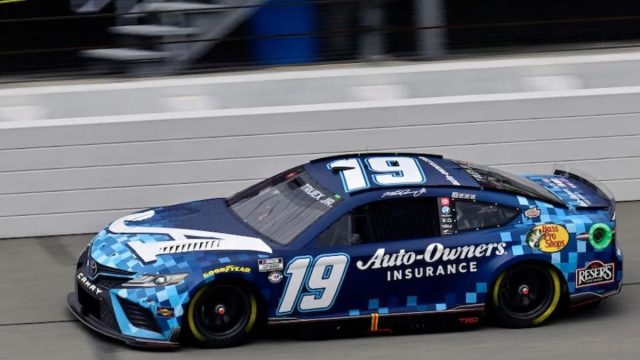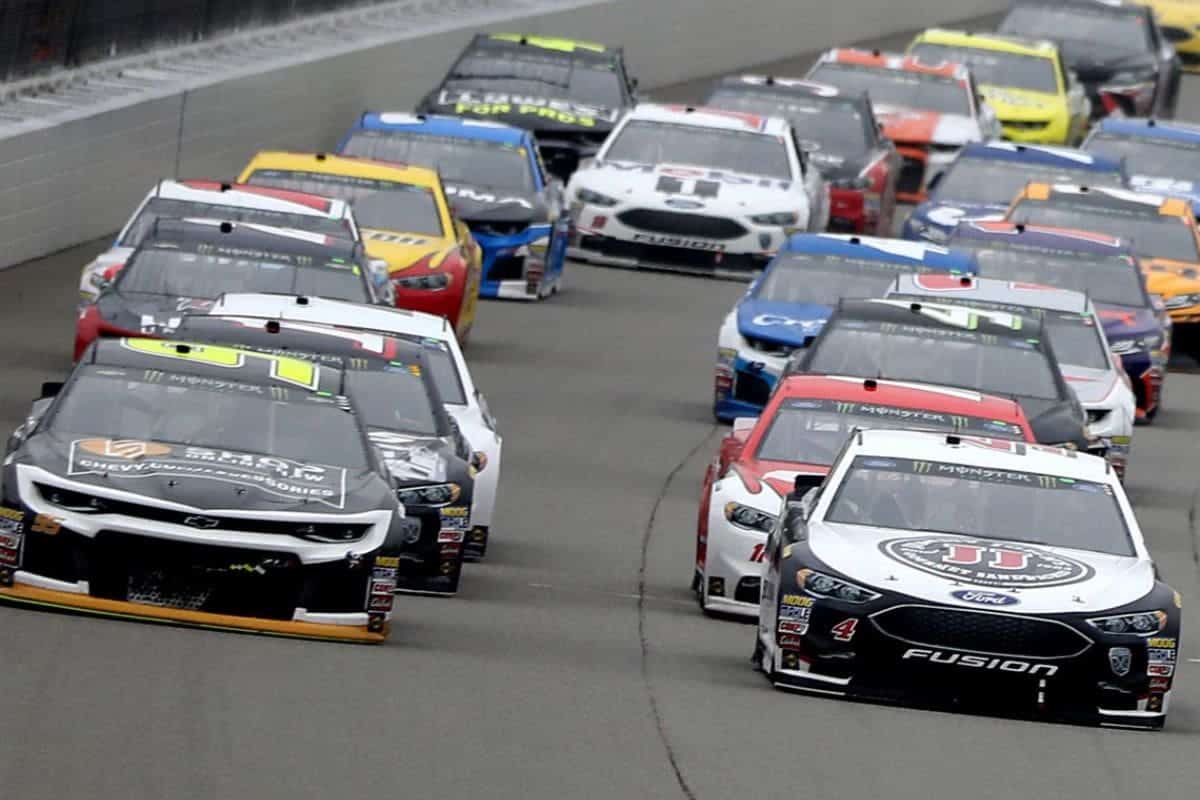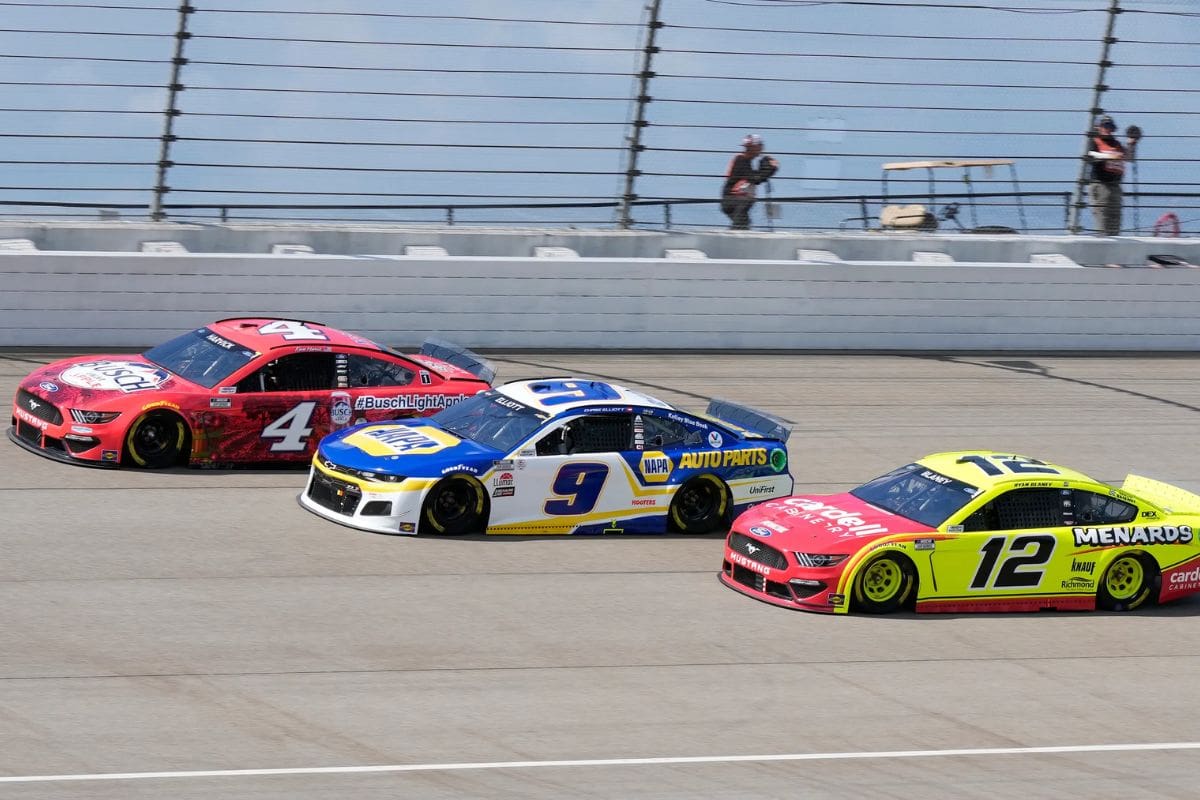Martin Truex Jr. Caution Controversy: The recent caution issued for Martin Truex Jr. during the FireKeepers Casino 400 at Michigan has ignited a critical discourse among NASCAR insiders, particularly regarding the apparent inconsistency in officiating standards. Analysts such as Jeff Gluck and Jordan Bianchi have pointed out noticeable contrasts between Truex Jr.‘s minor wall contact and Austin Cindric‘s more substantial incident, which went unpunished. This disparity raises profound questions about the implications for race integrity and the potential ramifications for driver trust in the system. As tensions mount, one must consider how this incident could shape the broader narrative of the season.
Key Highlights
- NASCAR insiders, including Jeff Gluck and Jordan Bianchi, criticized the rationale behind the caution for Martin Truex Jr.’s minor wall contact.
- The caution for Truex Jr. sparked debate due to its inconsistency compared to Austin Cindric’s more severe collision that did not prompt a caution.
- Analysts highlighted the need for clearer criteria in caution flag decisions, emphasizing the impact on race integrity and outcomes.
- The controversial caution affected playoff standings, overshadowing Tyler Reddick’s victory and frustrating several drivers due to perceived unfairness.
- Discussions around the caution decision raised concerns about NASCAR’s officiating consistency and the potential for eroding trust among teams and drivers.
Controversial Caution During FireKeepers Casino 400
The tension inherent in competitive racing was palpable during the FireKeepers Casino 400, particularly when Martin Truex Jr. triggered a caution that many deemed unnecessary. As Truex Jr. made contact with the wall late in the race, he managed to steer his car to pit road without considerable impediment, raising eyebrows among competitors and fans similarly.
The immediate decision by NASCAR officials to deploy a caution sparked a flurry of discourse, most prominently from race leader Tyler Reddick, who questioned the rationale behind the call.
In the context of NASCAR, caution flags serve a critical purpose, ensuring the safety of drivers and officials similarly. However, the timing and justification for such calls often come under scrutiny, particularly in high-stakes moments where the outcome hangs in the balance.
Truex Jr.’s ability to navigate off the racing surface without apparent difficulty led many to argue that the caution was unwarranted, potentially altering the race’s dynamics and outcome. The implications of this decision extended beyond the immediate race; it reignited ongoing debates regarding the consistency and transparency of NASCAR’s officiating.
As the sport continues to evolve, it faces the challenge of maintaining credibility while balancing safety concerns. The FireKeepers Casino 400 incident highlights the fine line NASCAR walks in making real-time decisions that can considerably impact both the race and the integrity of the series.
Critical Analysis from NASCAR Insiders
Following the controversial caution triggered by Martin Truex Jr. during the FireKeepers Casino 400, NASCAR insiders have begun to scrutinize the decision-making process behind such calls. Remarkably, analysts Jeff Gluck and Jordan Bianchi highlighted discrepancies in NASCAR’s judgment, questioning the rationale behind deploying the caution flag for Truex’s incident. Bianchi pointed out that Truex’s brush with the wall did not appear to pose a considerable threat, especially when compared to Austin Cindric’s more severe collision earlier in the race that went without a caution.
“It would be the decision by NASCAR to throw the caution from Martin Truex Jr., hitting the wall late in the race.”
“I think, when NASCAR looks back on this, they’re going to probably want that one back. I don’t think that warranted a caution in that moment.” – Bianchi
This inconsistency raises critical questions about the criteria used by NASCAR officials in determining when caution flags are warranted. The implications of such decisions can spread throughout the race, impacting strategies and outcomes.
“Particularly, if you look at the incident earlier, yesterday, with Austin Cindric, Austin Cindric slammed the wall, like pancaked it hard, not a caution, race continued on. I didn’t understand at this moment why Martin Truex Jr. hitting the wall warranted a caution flag. He was able to continue on, etc, etc. And then you look at the domino effect from that, the restarts and everything else. It spun into, you know, William Byron, is he going to pit or not going to pit? Is Tyler Reddick going to get a race — is this going to be another race where Tyler Reddick doesn’t win, right?” – Bianchi
Bianchi’s insights suggest that NASCAR may reflect on this incident with a sense of regret, acknowledging that the decision to throw the caution could have been more judicious. Such discussions among insiders emphasize the need for clarity and consistency in NASCAR’s officiating, as these elements are paramount in maintaining the integrity of the sport.
Implications of the Caution Decision
Examining the implications of the controversial caution decision reveals considerable ramifications for race outcomes and team strategies in NASCAR. The recent caution at Michigan raised eyebrows, particularly given the inconsistency in how similar incidents have been handled throughout the season. The decision not only altered the course of the race but also risked undermining the integrity of the competition, as it nearly shifted the winning outcome away from Tyler Reddick.
“Yeah, I mean, the implications there — I mean, it almost changed the winner outcome.”
“But yeah. Man, I just thought it was getting to a point recently, even earlier this year, where it was like, ‘Yeah, NASCAR doesn’t really throw that stuff anymore. You know, they’re really trying to stay out of it. They’re really trying not to have an impact on the race with those kinds of quick trigger cautions late in a race.’” – gluck
As racing teams strategize around the established patterns of caution calls, deviations can lead to considerable shifts in race dynamics. NASCAR’s recent trend of minimizing interference with late-race cautions reflects an effort to allow drivers and teams to dictate the race flow. However, this caution seemed to contradict that trend, prompting questions about the criteria being applied.
The unexpected nature of this decision may force teams to reconsider their approach to race strategy, particularly in regards to tire management and pit stops. Furthermore, it raises concerns about the consistency of officiating and the potential for perceived favoritism, which can erode trust among teams and drivers.
“And then one happened today, and yeah, it was — I’m glad that it didn’t (change the winner). It was a total chaos, but it certainly changed some things.” – gluck
The caution’s timing and impact on the points battle highlight the delicate balance NASCAR must maintain between ensuring safety and promoting competitive fairness. Ultimately, this incident could reshape how teams prepare and adapt, as they now must account for an unpredictable officiating landscape that could alter their race day outcomes.
Impact on Playoff Standings and Driver Frustration
Racing enthusiasts and competitors likewise felt the surge effects of the caution at Michigan, as it considerably influenced the playoff standings and ignited frustration among drivers. The decision to issue a caution flag, particularly for a wreck that many believed warranted a continue-race scenario, has stirred considerable discontent within the garage.
Tyler Reddick’s ability to secure victory through two overtime restarts was overshadowed by the consequences that unfolded in the wake of that caution. This caution not only altered the race’s outcome but also reshaped the playoff landscape, complicating the points battle for those working to secure their spots in the postseason.
Drivers who were poised for strong finishes suddenly found themselves at the mercy of the decision, and the wave effects were felt in the overall Cup Series points as well. Frustration surged, particularly among those who perceived the caution as unjustified, as they watched fellow competitors gain critical points in a tight playoff race.
Moreover, the emotional toll on drivers cannot be understated. In a sport where every lap and point counts, the perception of unfairness can breed resentment and diminish morale. As the playoff picture becomes increasingly defined, the potential for conflicts and confrontations among drivers rises, further complicating the competitive dynamics.
News in Brief: Martin Truex Jr. Caution Controversy
The controversy surrounding the caution for Martin Truex Jr. during the FireKeepers Casino 400 raises critical concerns about NASCAR’s officiating consistency. The clear contrast between Truex Jr.’s minor incident and Austin Cindric’s more serious collision, which went unrecognized, highlights the potential for perceived inequities in race management. Such inconsistencies not only hampers the integrity of competition but may also influence playoff standings, fostering driver frustration and eroding trust within the NASCAR community.
ALSO READ: Martin Truex Jr. Reacts to Austin Dillon’s Penalty: A Candid Assessment



